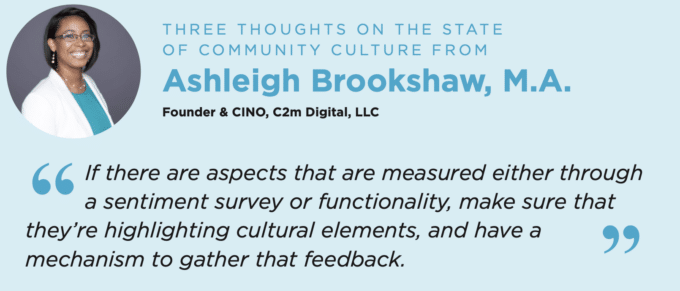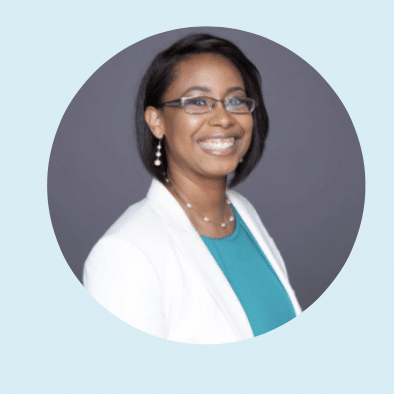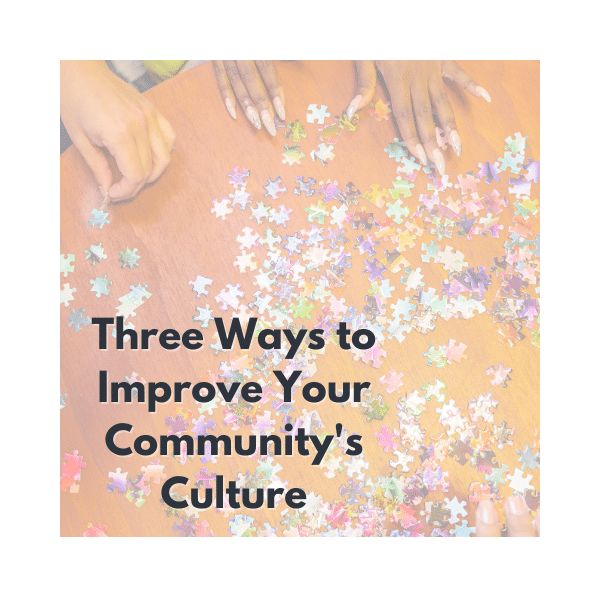
If there are aspects that are measured either through a sentiment survey or functionality, make sure that they’re highlighting cultural elements, and have a mechanism to gather that feedback.
Ashleigh Brookshaw, M.A.
As a member of the 2023 State of Community Management Advisory Board, Ashleigh Brookshaw provided guidance and expertise for research in the Culture competency of the research. She shared three ideas on the state of culture in communities with us.
On focusing on the positive…
“Through many conversations with community managers, I’ve realized that sometimes we get focused on the bad things within an organizational culture and kind of get stuck on that. It’s really important to highlight the positive, and find those elements that you can use – and are also measurable. If there are aspects that are measured either through a sentiment survey or functionality, make sure that they’re highlighting cultural elements, and have a mechanism to gather that feedback.”
On community and change management…
“One of the main things that is difficult for many community professionals is continuously reinforcing the business value of community. [This is where] having the organizational structure, policies, and procedures to affect that culture change long-term, enables those business conversations with the appropriate stakeholders. You have to be able to articulate what is the business value of community in terms that they understand: impacting the bottom line, etc.”
On disrupting “tap on the shoulder culture”…
Community is a great place to enact meaningful culture change. Ashleigh shared an example from her career, “There was a lot of what I’ll call “dissent” among marginalized groups within the community, on seeing the same types of speakers at the annual conference. It’s always the same people, that organizational culture was what I would call a ‘tap on the shoulder culture’, they kept tapping the same people over and over to show up in different spaces. So in the community, I saw some conversation, “Why do you guys always have the same speakers?” I took that to the professional development team and showed them, “There is a gap that’s being discussed via the members, let’s address that and then circle back to them.” It was a very real world, tangible way to use community to kind of disrupt that ‘tap-on-the-shoulder’ culture that had been there all along. This led to a holistic DEIB strategic discussion, and resulted in the organization acting meaningfully and highlighting opportunities across all channels not just through cliques.”



